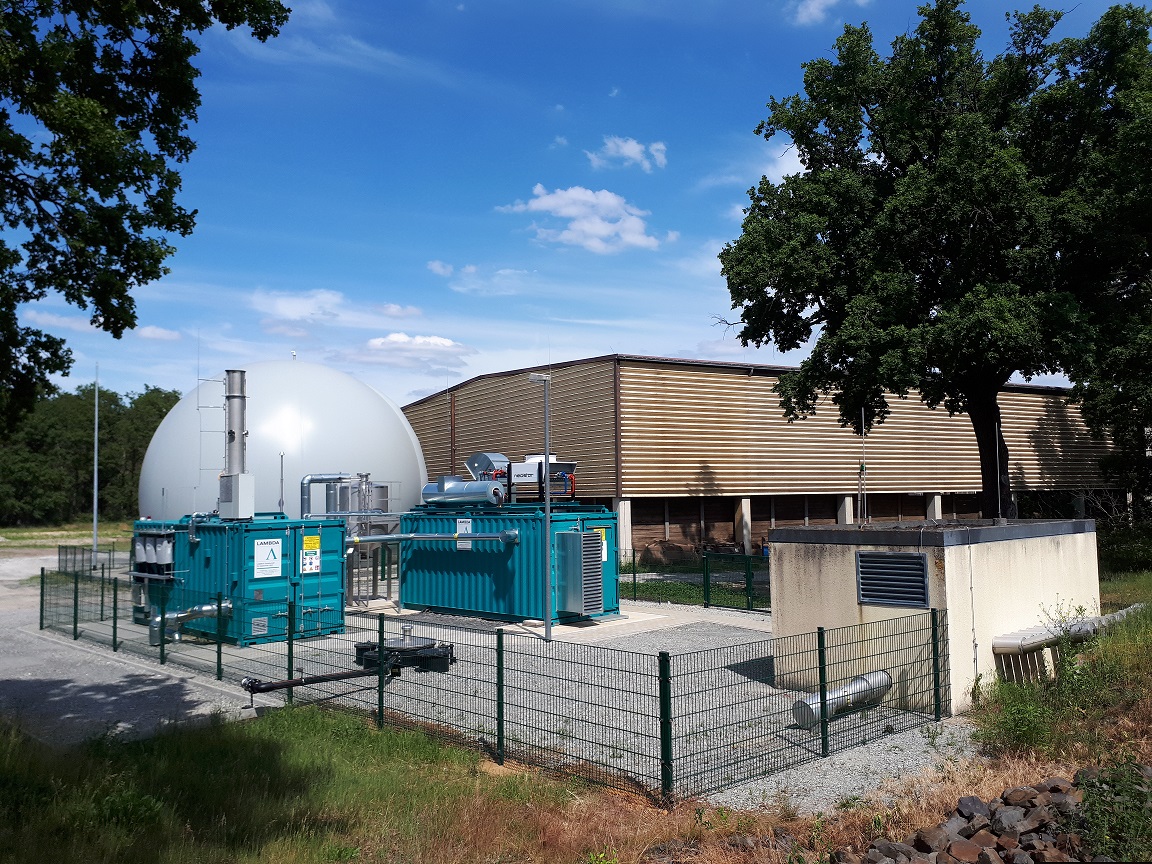KAEV Niederlausitz - Waste turns into energy

The municipal waste disposal association "Niederlausitz" (KAEV) uses a new innovative technology to convert residual landfill gas produced at the closed landfill site in Lübben-Ratsvorwerk into electricity. A lean gas flare system, a gas storage tank and a combined heat and power plant (CHP) were installed to supply the site.
In the past, untreated household waste ended up in municipal solid waste landfills. This has been prohibited in Germany since 1 June 2005. Even decades later, there is still a lot happening inside these sealed and closed landfills. Bacteria and chemical processes during the decomposition of organic material in household waste produce combustible greenhouse gases such as methane or carbon dioxide. When released into the atmosphere, these gases can intensify climate change or cause a landfill fire. For this reason, they are specifically extracted and usually burnt with a flare system and, if necessary, converted into electricity. Over the years, the amount of produced gas decreases and the landfill slowly "outgasses". Conventional degassing plants and flare systems can then no longer be operated efficiently. KAEV therefore uses a new innovative technology to even flare lean gas.
Landfill gas becomes electricity for self-sufficiency
With the help of grants from the European Regional Development Fund (ERDF), KAEV and Lambda Gesellschaft für Gastechnik mbH converted the former degassing plant to innovative lean gas technology and built a new combined heat and power plant (CHP) with a gas storage tank. The expertise of Dr. Arnd Seyfert of SEF-Energietechnik GmbH, who came up with the idea, contributed to the fact that the fluctuating gas outflows can now be fully converted into electricity. In phases of low-concentration outflowing gases, these are burnt in the newly constructed lean gas flare system. In the gas storage tank, "less" and "more" concentrated landfill gas, that can be used for combustion, is mixed (equalised) in order to operate the combined heat and power plant with constant efficiency. This generates electricity that is needed in other facilities and plants on the site and previously had to be purchased at high cost. Surplus electricity is fed into the power grid. Generating one‘s own electricity thus contributes not only to sustainability, but also to the stability of disposal fees for the population, as external electricity costs are reduced.
Pioneer in sustainable landfill gas utilisation
With the new plant, KAEV is playing a pioneering role in Germany in the utilisation of residual landfill gases. The process can potentially be used in all old domestic waste landfills with similar conditions. In this way, the project can effectively and sustainably convert previously unusable residual gases into electricity. This contributes significantly to economic and ecological energy savings and recovery as well as to CO2 reduction and thus to compliance with the UN climate goals in the State of Brandenburg.
For further information, visit www.kaev.de
In the past, untreated household waste ended up in municipal solid waste landfills. This has been prohibited in Germany since 1 June 2005. Even decades later, there is still a lot happening inside these sealed and closed landfills. Bacteria and chemical processes during the decomposition of organic material in household waste produce combustible greenhouse gases such as methane or carbon dioxide. When released into the atmosphere, these gases can intensify climate change or cause a landfill fire. For this reason, they are specifically extracted and usually burnt with a flare system and, if necessary, converted into electricity. Over the years, the amount of produced gas decreases and the landfill slowly "outgasses". Conventional degassing plants and flare systems can then no longer be operated efficiently. KAEV therefore uses a new innovative technology to even flare lean gas.
Landfill gas becomes electricity for self-sufficiency
With the help of grants from the European Regional Development Fund (ERDF), KAEV and Lambda Gesellschaft für Gastechnik mbH converted the former degassing plant to innovative lean gas technology and built a new combined heat and power plant (CHP) with a gas storage tank. The expertise of Dr. Arnd Seyfert of SEF-Energietechnik GmbH, who came up with the idea, contributed to the fact that the fluctuating gas outflows can now be fully converted into electricity. In phases of low-concentration outflowing gases, these are burnt in the newly constructed lean gas flare system. In the gas storage tank, "less" and "more" concentrated landfill gas, that can be used for combustion, is mixed (equalised) in order to operate the combined heat and power plant with constant efficiency. This generates electricity that is needed in other facilities and plants on the site and previously had to be purchased at high cost. Surplus electricity is fed into the power grid. Generating one‘s own electricity thus contributes not only to sustainability, but also to the stability of disposal fees for the population, as external electricity costs are reduced.
Pioneer in sustainable landfill gas utilisation
With the new plant, KAEV is playing a pioneering role in Germany in the utilisation of residual landfill gases. The process can potentially be used in all old domestic waste landfills with similar conditions. In this way, the project can effectively and sustainably convert previously unusable residual gases into electricity. This contributes significantly to economic and ecological energy savings and recovery as well as to CO2 reduction and thus to compliance with the UN climate goals in the State of Brandenburg.
For further information, visit www.kaev.de

